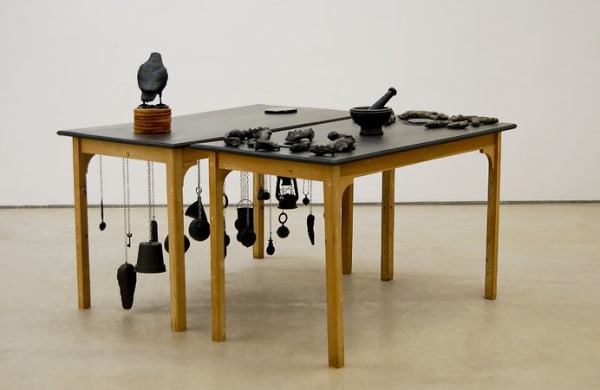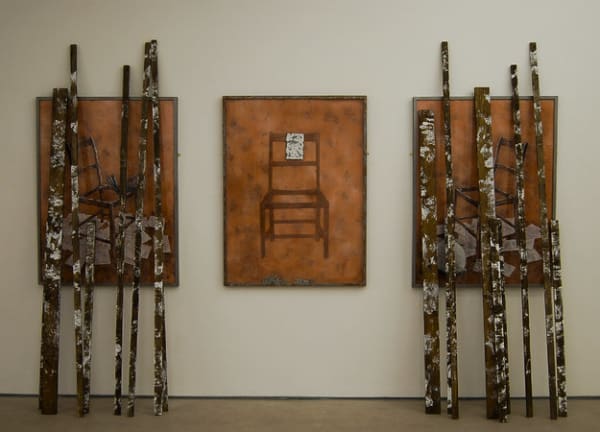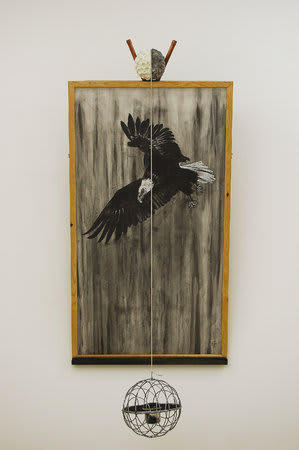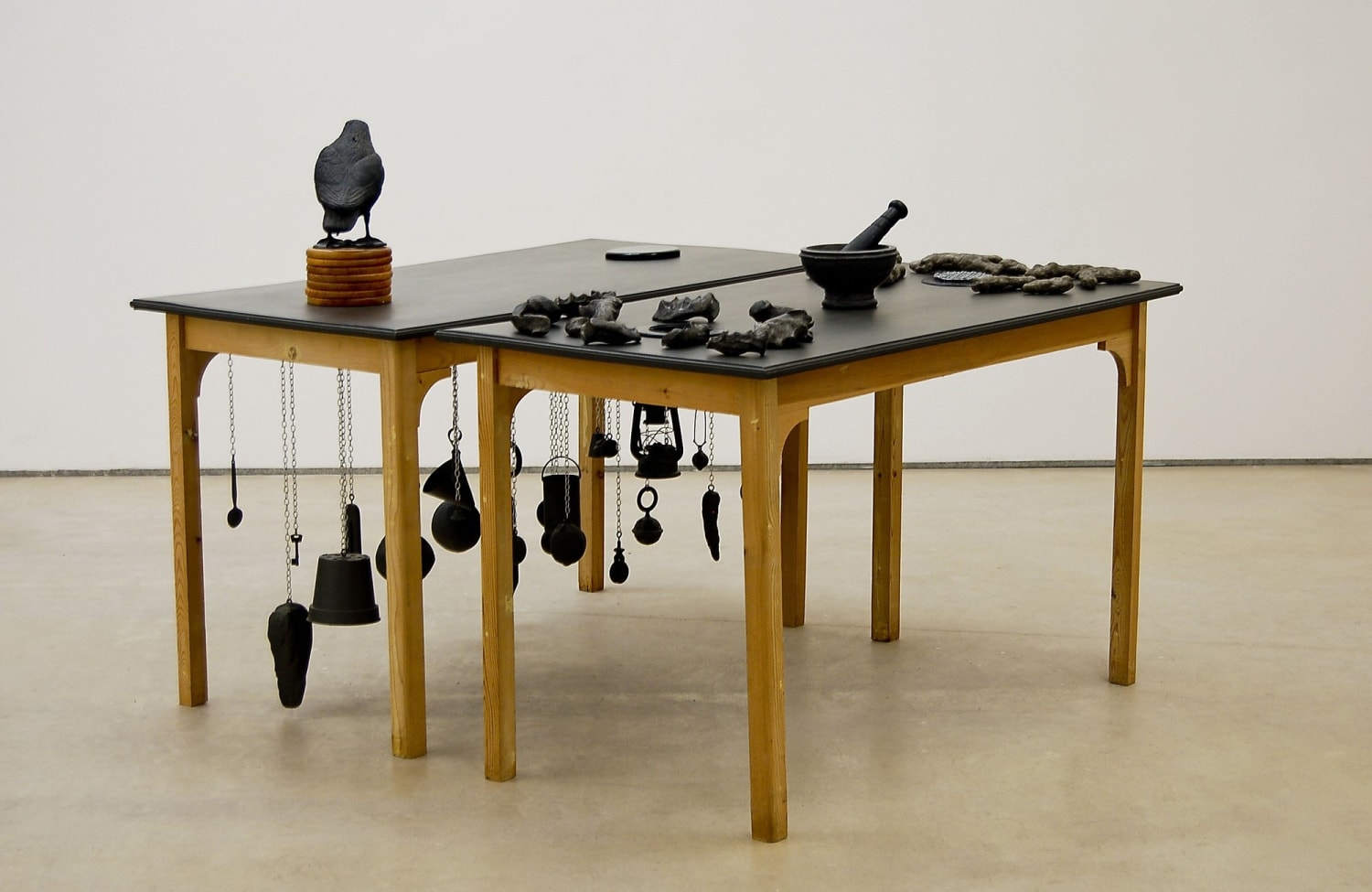Alternative Universe: Carl Plackman
Hales Gallery is pleased to present a selection of works from the estate of the influential British sculptor Carl Plackman who died in 2004. The gallery began working with the Plackman Estate in 2010 and this is the first solo exhibition of his assemblage sculptures at Hales Gallery.
AlternativeUniverserefers to Plackman's rearranged, complex and enigmatic value system which, through his use of carefully crafted objects applied to all of the works he made. Plackman was a sculptor exploring the invisible threads of imaginative human connections that can ignite the space around things. The works explore the realm of the symbolic. The viewers are encouraged to place significance on objects that singularly hold little importance. It is in this sense that Plackman's work acts as a puzzle where narratives and form are discovered. It is impossible to pin down a singular reading on any work as ambiguity is precisely what was intended. Clarity is blurred as the pieces operate simultaneously on a subconscious, metaphysical and material level.
The show features a number of works from the 80's, 90's and 00's. Several, such as Decoy (2000) and All the Great Minds (1999) are floor based works made with multiple elements, whilst others, such as Obliterated Confessions (1986) and Rise and Fall (2003), combine large framed drawings with carefully selected sculptural elements. These ready-mades and found objects play crucial roles in exploring what we expect from sculpture.
From the outset it was clear that Plackman's ideas and work stood apart from other sculptors in the field. An influential figure to numerous generations of artists who having passed through London's Goldsmiths College of Art (1970-99) and the Royal College of Art (1974-80), where he taught, benefited from his singular and thoughtful view, some of whom were influenced by his liberating approach and went on to have important and successful careers themselves. The language that Plackman developed (that of object, symbol, materiality and metaphor) looks completely at home with a new generation of artists showing and working in Britain today.
Throughout the 1970's and into the early 1980's, sculpture in Britain was viewed as a very separate entity to that of previous sculptors and had a plethora of exhibitions dedicated to it. Plackman was at the forefront of many of these shows including New Sculpture (1970) an Arts Council touring exhibition, Three Sculptors (1972) and Scale for Sculpture (1978) at London's Serpentine Gallery, British Sculpture (1972) at The Royal Academy of Arts and British Sculpture 1950-1980 Part 2: Symbol and Imagination, shown at the Whitechapel Gallery. However, one senses that Carl was never completely happy having his work placed alongside the hermetically sealed world of 'The Sculptor' as his work, at the time, consistently pushed at the boundaries of an acceptable language.
Carl Plackman left an impressive body of work spanning five decades including diverse drawings, expansive sculpture and many preparatory sketches. His legacy refuses to diminish and his work has now become particularly relevant to the development of British sculpture and successive generations of British artists.
In 2007, the book accompanying his retrospective show Beyond Appearances was published by Huddersfield City Art Gallery featuring commentary from numerous important contributors. Plackman's work is included in the collections of Tate, Henry Moore Institute, Arts Council Collection, British Museum, Victoria and Albert Museum, The Courtauld Institute and the National Museum of Wales.








